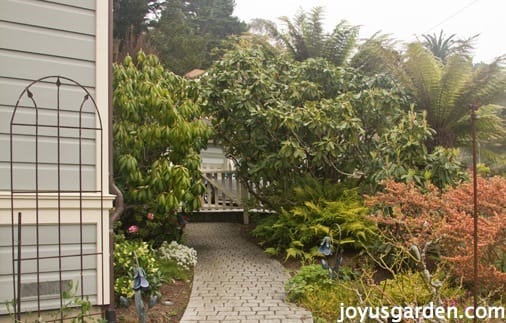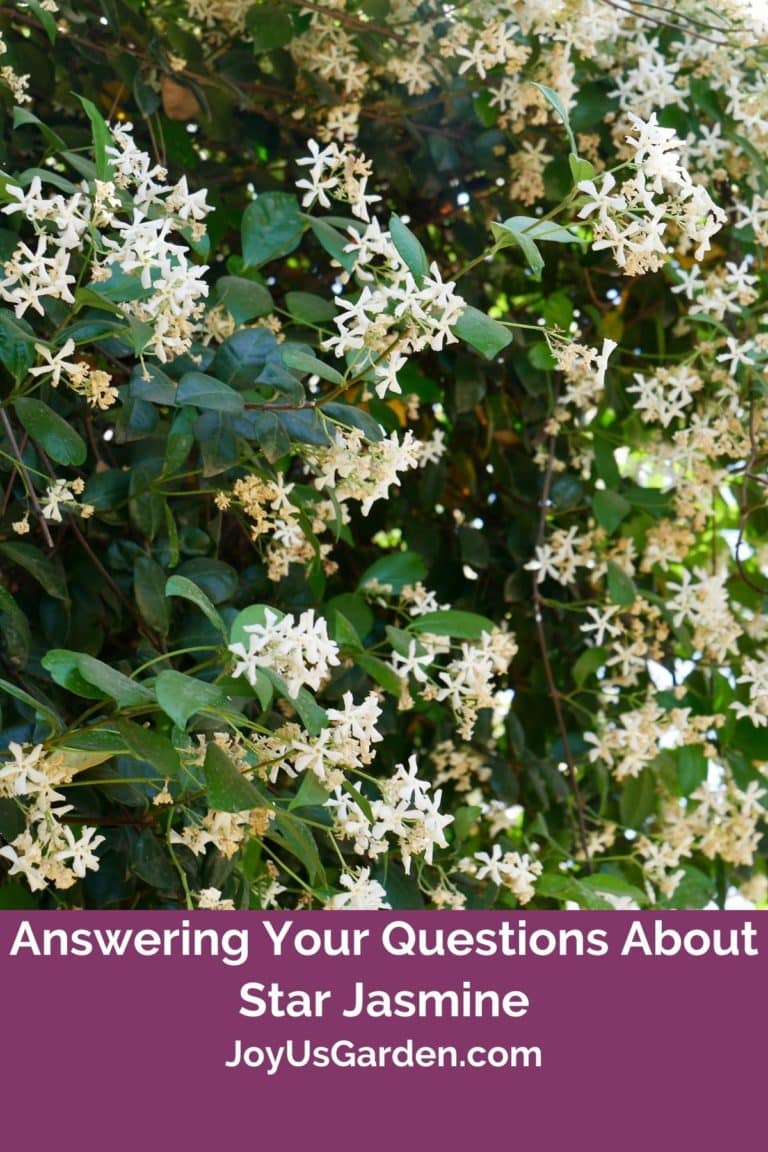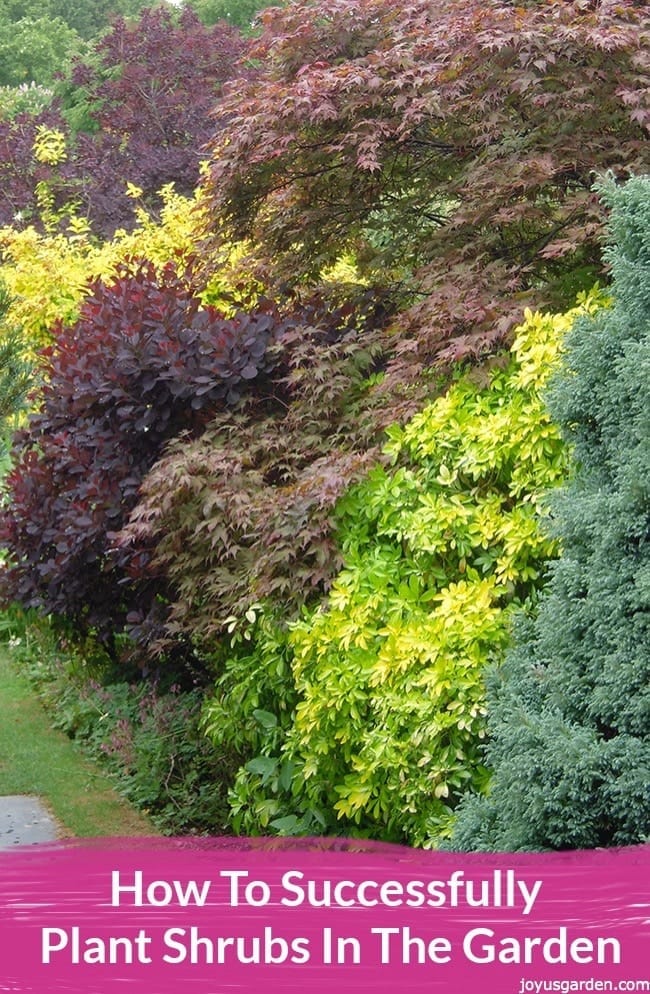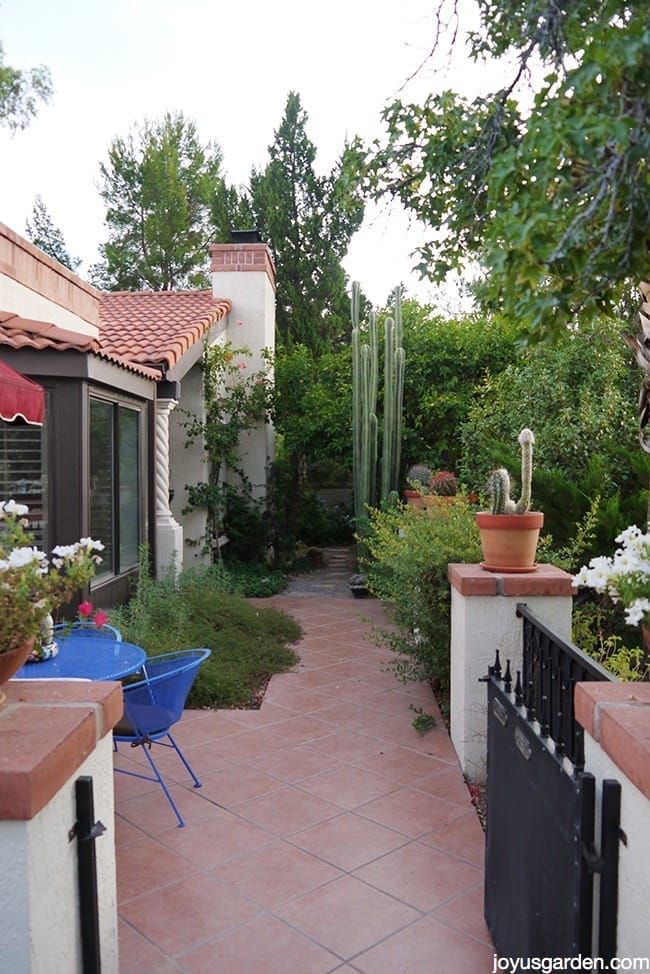What To Do In A Drought With A Non-Drought Tolerant Garden
Yes, it’s true, everything you’ve heard is spot on. California is in the throes of a drought. Holey Moley, it’s dry! My client’s garden was planted years ago when water wasn’t as scarce. This is all about water conservation in the garden and what to do with one that’s non-drought tolerant.
My own garden in Santa Barbara couldn’t get any more drought tolerant than it is unless I’d planted all cacti. Normal winters are too wet and cold for them so that option was out. I did a happy dance six years ago when I ripped my lawn out. The existing anchor plants that remained don’t need much water. The new ones I planted, succulents and plants native to Australia and South Africa, don’t either.
My garden and I are as eco as can be. I even grey water all my own container plants. What I’m sharing with you here are my suggestions to make my client’s water-thirsty garden more drought tolerant. You’ll see more of this garden I’m talking about in the video at the end.
I thought this was a very timely post to do. All you hear everywhere up and down the state is about the lack of water and what each town and city’s plan of attack is – really!
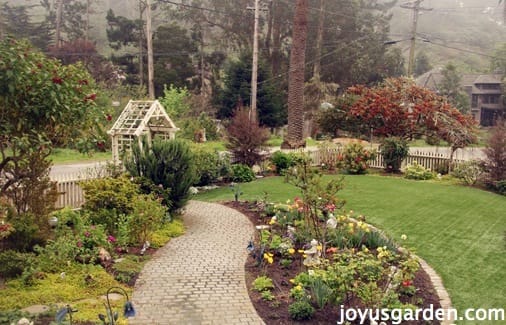
Recently I spoke at the San Francisco Flower & Garden Show. I stayed on for a couple of days afterwards to work in my client’s garden for a round of early Spring cleaning and a little planting. This is a big garden with rhododendrons, hydrangeas, camellias, roses, ferns and so on. Plants that don’t pop into your mind when you say “drought tolerant”.
Like many parts of California, this garden is in a Mediterranean climate zone where the rains come in the winter so supplemental water is needed. You can’t turn the water off completely on the aforementioned plants. Plus, that town’s water department has been grumbling about excessive usage so time to take action.
Water rates are rising. There’s no water rationing yet (hey Gov, any plans for that?). It’s just not cost effective to rip out all the mature plants and start all over. The client loves her garden. There are a LOT of plants in this garden so that’s not an option. Here’s are the simple adjustments I’m recommending:
Tips For Making A Water Thirsty Garden More Drought Tolerant
1) Don’t do any unnecessary or extensive pruning of trees & shrubs.
I know a docent at the fabled Lotusland here in Santa Barbara. She said that the head gardener ordered a big pruning in the late Fall not anticipating such this tremendously dry, warm winter & now regrets it. These larger canopy plants shade the plants below & help to keep the ground cooler. Consider them to be awnings or patio umbrellas.
They shade us from the sun & these larger plants which root much deeper do the same for their smaller understory friends. I was going to have my loquat & orange trees pruned but after hearing that, decided “no way”. Another thing to consider when thinking about pruning in these conditions – you could greatly stress the trees & shrubs.
2) Don’t water midday.
Hello people, that is the hottest part of the day and a portion of the water will evaporate in the heat. Water as early in the morning as you can. This garden is on drip so that’s what I going to refer to. It turns on at 4 am so that’s a plus. Early in the morning before sunrise is best because that’s when the water pressure is the highest & the air is coolest.
3) Speaking of drip, check your irrigation system to make sure it’s running efficiently.
This is important to do every year but especially in a drought. If there are breaks, tears or missing heads, make sure they’re all repaired & taken care of.
Like anything, if your system is “tuned up”, it will run better. I ran my system just after daybreak this morning to check all the heads to make sure they were functioning how I wanted them to. No water waste on my property!
4) Check all your garden hoses to make sure there are no leaks or cracks in them either.
Replace any washers or connectors which are causing drips. Repair outdoor faucets if they’re leaking. All those little drips add up.
5) Water less frequently & for a slightly longer period of time. In other words, water deeper.
How long that is for depends on the plants you have & how warm you are. The irrigation system for this garden was running 3 days a week & will be knocked back to 2 days. The time will be upped by 5-10 minutes depending on the plants in the zones.
This garden has 13 zones & 2 of them will be turned off completely. My own garden gets watered once a week for 10-15 minutes. It only has only has 2 zones. The back garden gets more sun that the front so it gets more water. Important: make sure you are not overwatering.
6) This garden had an artificial lawn installed in 2006 so no need to water the grass.
Yahoo! Let’s face it, not everyone wants it nor can afford the initial investment. There are drought tolerant grasses & plants which make a great alternative. This is a Victorian style house so the lawn suits it to a tee.
Lawn is not my area of expertise but I do know that they take a good amount of water & that a lot of people overwater theirs. A lot of the water runs off. I’m much more into plants but I will say the same thing regarding this subject: water less often & deeper.
Another thing to think about, don’t fertilize your lawn to stimulate an excess of new growth. You’d better enjoy & use that lawn if you have one! See what I replaced the lawn with in my front yard.
7) Replace most of the annuals with drought tolerant, flowering perennials. My client loves flowers & the more color the better.
She actually suggested this which I gave a high five to. I was thinking it but thought she’d faint if I brought it up first. Off the hook on that one.
I got a lot of salvias, penstemmons & pelarongiums to replace the impatiens and begonias which usually fill the beds. These root much deeper than the annuals & can take drier soil. I also picked up a couple of flats of Lobelia to fill in here. I’ve found that to be fairly drought tolerant. It reseeds in the driveway cracks after all!
8) Last but not least, mulch.
This is especially important during the drought years. Apply a 2-4″ layer of a good, organic mulch or compost. The benefits to this are: increased water retention & keeping the soil cooler which in turns keep the roots cooler. Compost will also enrich the soil. This garden will be top dressed with 10-12 cubic yards of Black Nitro – good stuff.
This drought is not going to go away anytime soon. We grow a lot of food here in California for everyone in our country. This drought effects everyone. Landscaping sucks a lot of water so we have to be smart about how much we use.
Yes, it does take effort. Make a few simple changes in regard to water conservation in the garden and you’ll be doing your part. Now don’t get me going on hosing down the sidewalks!
This post may contain affiliate links, you can read our policies here.
- About the Author
- Latest Posts
Nell, the founder of Joy Us garden, was born into a gardening family and grew up in Connecticut’s countryside. After living in Boston, New York, San Francisco, & Santa Barbara, she now calls the Arizona desert home. She studied horticulture & garden design, working in the field all her life. Nell is a gardener, designer, blogger, Youtube creator, & author. She’s been gardening for a very long time & wants to share what she’s learned with you.
